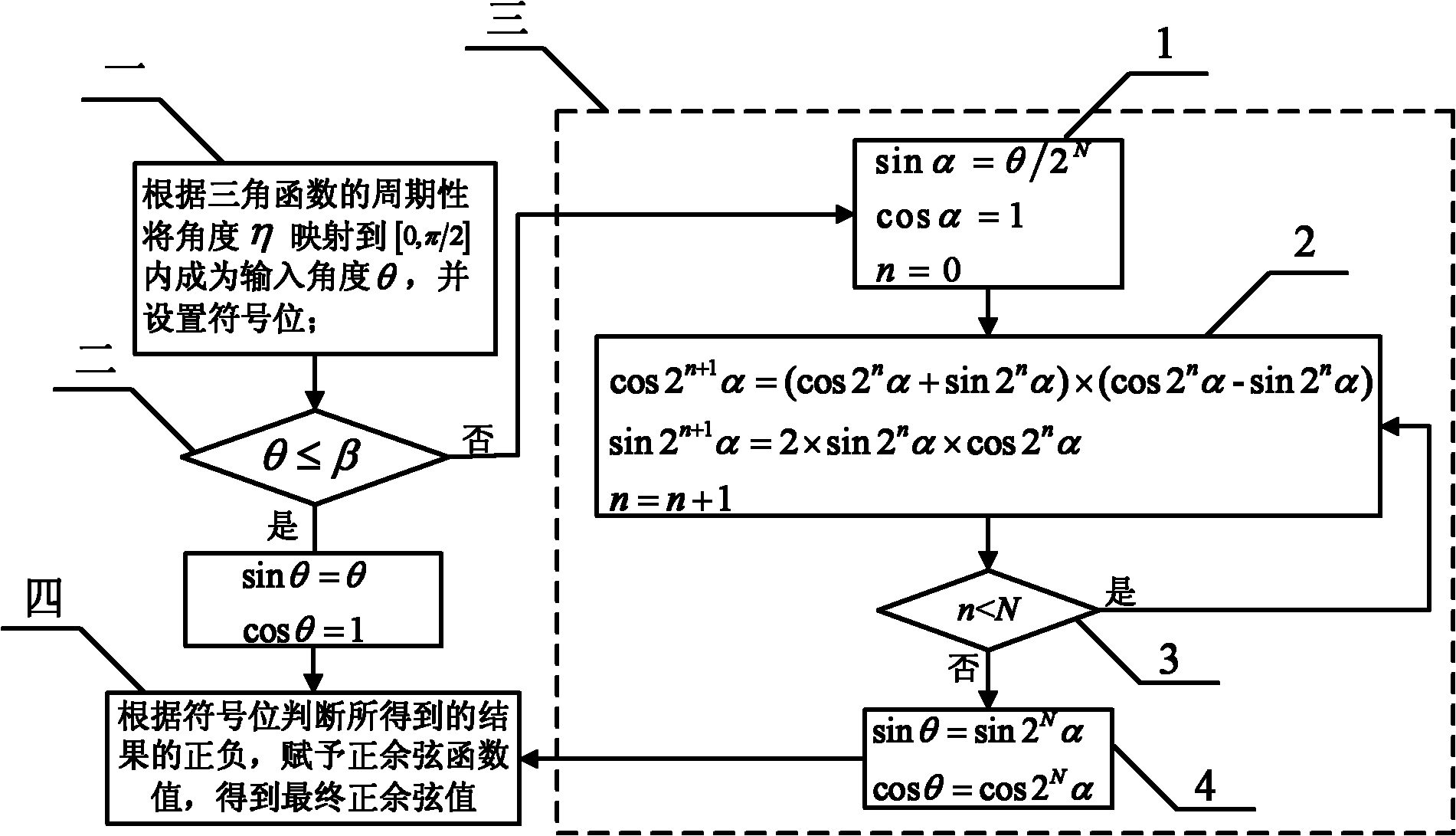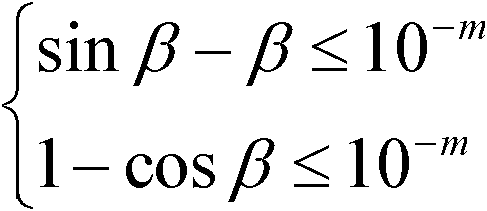Sine-cosine function IP core capable of reconfiguring spaceborne computer and control method thereof
A technology of sine and cosine functions and satellite-borne computers, which is applied in calculation, electrical digital data processing, digital data processing parts, etc., and can solve problems such as rounding errors and result effects
- Summary
- Abstract
- Description
- Claims
- Application Information
AI Technical Summary
Problems solved by technology
Method used
Image
Examples
specific Embodiment approach 1
[0028] Specific embodiment one: combination figure 1 To describe this embodiment, the steps of this embodiment are as follows:
[0029] Step 1: According to the periodicity of the trigonometric function, map the angle η to [0, π / 2] to become the input angle θ, and set the sign bit;
[0030] Step 2: Perform pre-judgment to determine whether the input angle θ is less than or equal to the given critical angle β. Yes, that is, when θ≤β, directly use sinθ=θ, cosθ=1 for assignment and proceed to step 4. No, That is, when β<θ≤π / 2, go to step three;
[0031] Step 3: Iterative operation:
[0032] Step 1: Perform an iterative operation on the input angle θ, and divide the input angle θ by 2 N , Get the initial assignment according to the approximate criterion:
[0033] sinα=θ / 2 N
[0034] cosα=1
[0035] n=0
[0036] Among them, N represents the total number of iterations, and n represents the nth iteration;
[0037] Step 2: Use the double angle formula to calculate:
[0038] cos2 n+1 α=(cos2 n α+sin...
specific Embodiment approach 2
[0044] The second embodiment: The difference between this embodiment and the first embodiment is the calculation of the critical angle β in step 2:
[0045] The expected design accuracy is 10 -m , According to the principle of initial assignment, the critical angle β should satisfy:
[0046] sin β - β ≤ 10 - m 1 - cos β ≤ 10 - m
[0047] For example, the expected design accuracy is 10 -7 , The critical angle β should satisfy:
[0048] sin β - β ≤ 10 - 7 1 - cos β ≤ 10 - 7
[0049] The required β = 0.0014. Other components and connection modes are the same as the first embodiment.
specific Embodiment approach 3
[0050] Specific embodiment three: This embodiment and the specific embodiment one or two points are that the total number of iterations N in step 3 is 21; the main errors of implementing the sine and cosine function using the iterative algorithm are: rounding error and truncation error. When the iterative process retains many valid digits, the truncation error has little influence on the calculation result and can be ignored, so only the rounding error generated in the initial assignment is considered.
[0051] Perform Taylor expansion on sinx and cosx, there are:
[0052] sinx=x-x 3 / 3! +x 5 / 5! -...
[0053] cosx = 1-x 2 / 2! +x 4 / 4! -...
[0054] When the value of x is much smaller than 1, it is only necessary to keep the first term of the expansion to meet the calculation accuracy requirements.
[0055] Let α≈θ / 2 N , Suppose the errors of the n-th iterative calculation of sine and cosine are respectively ε n ,Δ n , Using the recursive method to derive the error expression of th...
PUM
 Login to View More
Login to View More Abstract
Description
Claims
Application Information
 Login to View More
Login to View More - R&D
- Intellectual Property
- Life Sciences
- Materials
- Tech Scout
- Unparalleled Data Quality
- Higher Quality Content
- 60% Fewer Hallucinations
Browse by: Latest US Patents, China's latest patents, Technical Efficacy Thesaurus, Application Domain, Technology Topic, Popular Technical Reports.
© 2025 PatSnap. All rights reserved.Legal|Privacy policy|Modern Slavery Act Transparency Statement|Sitemap|About US| Contact US: help@patsnap.com



